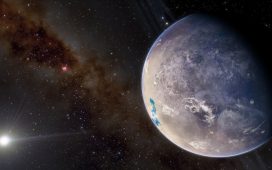While the dream of sending men to Mars remains in the realms of science fiction, NASA has been sending robotic vehicles, called rovers, to the Red Planet for the past 27 years.
The first landed in 1997 before images of our closest neighbour planet were historically beamed back to Earth.
A total of six have been sent there now, with two currently active, and the images of the desert surface of the planet are now so close up some people have said viewing them feels almost “like being there.”
The quality of images has dramatically improved with the two most recent rovers that continue to explore the surface. The first rover called Sojourner landed on Mars in 1997. The Spirit Rover was sent in 2004 and it explored the planet until 2010.
The Opportunity Rover was also sent in 2004 and that was active until 2018.
Two rovers remain active, Curiosity which was sent in 2012 and Perseverance which landed in 2021 and is also still exploring.
Both have their on feeds on X which are regularly updated with starting new photographs, written in the first person as if the rover were describing what it saw.
Yesterday, the Perseverance Rover posted: “My journey to the rim of Jezero Crater has been a challenging one.
“As you can see in this image from my rear Hazcam, I’m dealing with some steep and slippery terrain. But thanks to my team and autonomous navigation system, I’m avoiding any big hazards as I slowly make my way up.”
It is slow going for the rovers and Perseverance spent more than two years in one crater.
In August it posted: “After more than two years of exploring the Jezero Crater floor, I’m about to start a months-long journey to the crater’s rim. The climb will include about 1,000 ft (300 m) in elevation gain with slopes as steep as 23 degrees.”
On September 13 it hit the milestone of travelling 30km (18 miles) since it landed in 2021.
The droids are sending invaluable information about the structure of the planet, its past water, and the possibility of it containing any lifeforms to NASA scientists.
The Curiosity Rover also drills into rocks to take samples of the substances making them up. On October 7 Curiosity posted: “How did Mars become the planet we know today?
“New data from @MarsCuriosity points to strong water evaporation in its ancient past – a possible clue into how the Red Planet became a desert.”
It had earlier posted about some wear and tear damage to its wheels, reassuring followers it was fine to continue.
Followers regularly comment on the mind-blowing images that are posted. One said: “The detail in some of these pictures is astounding. It’s almost as if you are there!”
But, some followers, so shocked by the quality of the frames and the likeness to a desert on Earth, have posted conspiracy theory suggestions that NASA is filming in the Arizona desert and has never managed to get any rovers to Mars.
One posted: “Where in Arizona is this? NASA…??????.”
Another added: “(Are) we positive this isn’t just driving around the Arizona desert?”
NASA, of course, insists the rovers are on Mars and details of their sending there and landing were fully recorded and shown at the time.












